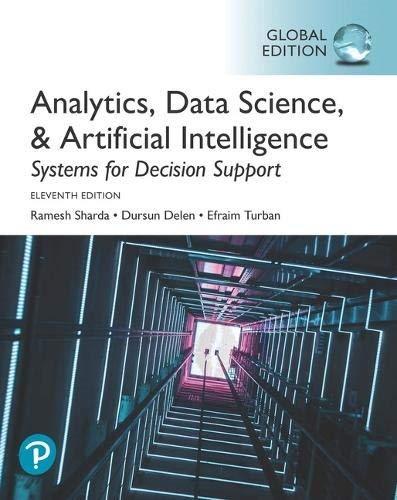Water management is one of the most important challenges for many communities. In general, the demand for
Question:
Water management is one of the most important challenges for many communities. In general, the demand for water is growing while the supply could shrink (e.g., due to pollution). Managing water requires the involvement of numerous stakeholders ranging from consumers and suppliers to local governments and sanitation experts. The stakeholders must work together. The objective is to have responsible water use and water preservation. The accounting office of PwC published report 150CO47, "Collaboration: Preserving Water Through Partnership That Works" available at pwc.com/hu/hu/kiadvanyok/assets/pdf/pwc_ water_collaboration.pdf. It describes the problem and its benefits and risks. The report shares the different stakeholders' perspectives, identifies the success factors of collaboration, and weighs the trade-offs for evaluating alternative solutions for the water management issue. An interesting framework for a solution is the collaborative modeling developed at Oregon State University in collaboration with Indiana University Purdue University. Planning and managing water conservation activities are not simple tasks. The idea is to develop a userfriendly tool that will enable all stakeholders to participate in these activities. It is necessary to involve the stakeholder communities in using scientifically developed guidelines for designing water conservation practices. Here are some of the requirements of the desired tool:
• The tool needs to be interactive and human guided and operated.
• It needs to be Web-based and user friendly.
• Both individuals and groups should be able to use it.
• It should enable users to view and evaluate solution designs based on both quantitative and qualitative criteria.
The Solution: WRESTORE
Watershed Restoration Using Spatio-Temporal Optimization (WRESTORE) is a Web-based tool that meets the preceding requirements. It is based on AI and analytical optimization algorithms. The algorithms process dynamic simulation models and allow users to spatially optimize the location of new water conservations. In addition to using the dynamic simulation models, users are able to include their own personal subjective views and qualitative criteria. WRESTORE generates alternative practices that users can discuss and evaluate.
Incorporation of human preferences to computer solutions makes the solutions more acceptable.
The AI part of the project includes machine learning and crowdsourcing (Section 11.7) to solicit information from the crowd. The reason for the participative collaboration is that water is an essential resource and should not be only centrally controlled.
The AI technologies "democratize" water management while harnessing the power of people and computers to solve difficult water management problems.
The machine-learning algorithms learn from what people are doing. Human feedback helps AI to identify best solutions and strategies. Thus, humans and machines are combined to solve problems together.
The Results
WRESTORE developers are experimenting with the technology in several places and so far have achieved full collaboration from participating stakeholders. Initial results indicate the creation by WRESTORE of innovative ideas for developing water resources and distribution methods that save significant amounts of water.
Questions for Case
1. Crowdsourcing is used to find information from a crowd. Why is it needed in this case? (see Section 11.7 if you are not familiar with crowdsourcing).
2. How does WRESTORE act as a CI tool?
3. Debate centralized control versus participative collaboration.
Cite the pros and cons of each.
4. Why it is difficult to manage water resources?
5. How can an optimization/simulation/AI model support group work in this case?
Step by Step Answer:

Analytics Data Science And Artificial Intelligence Systems For Decision Support
ISBN: 9781292341552
11th Global Edition
Authors: Ramesh Sharda, Dursun Delen, Efraim Turban





